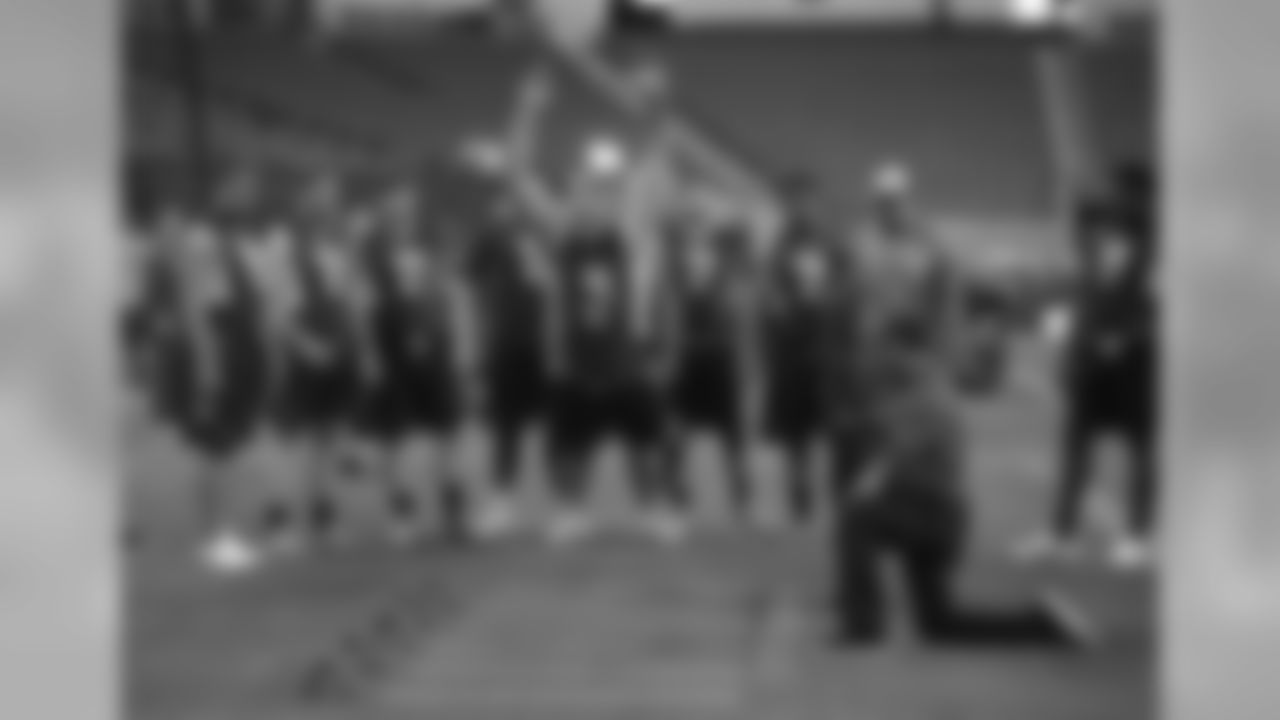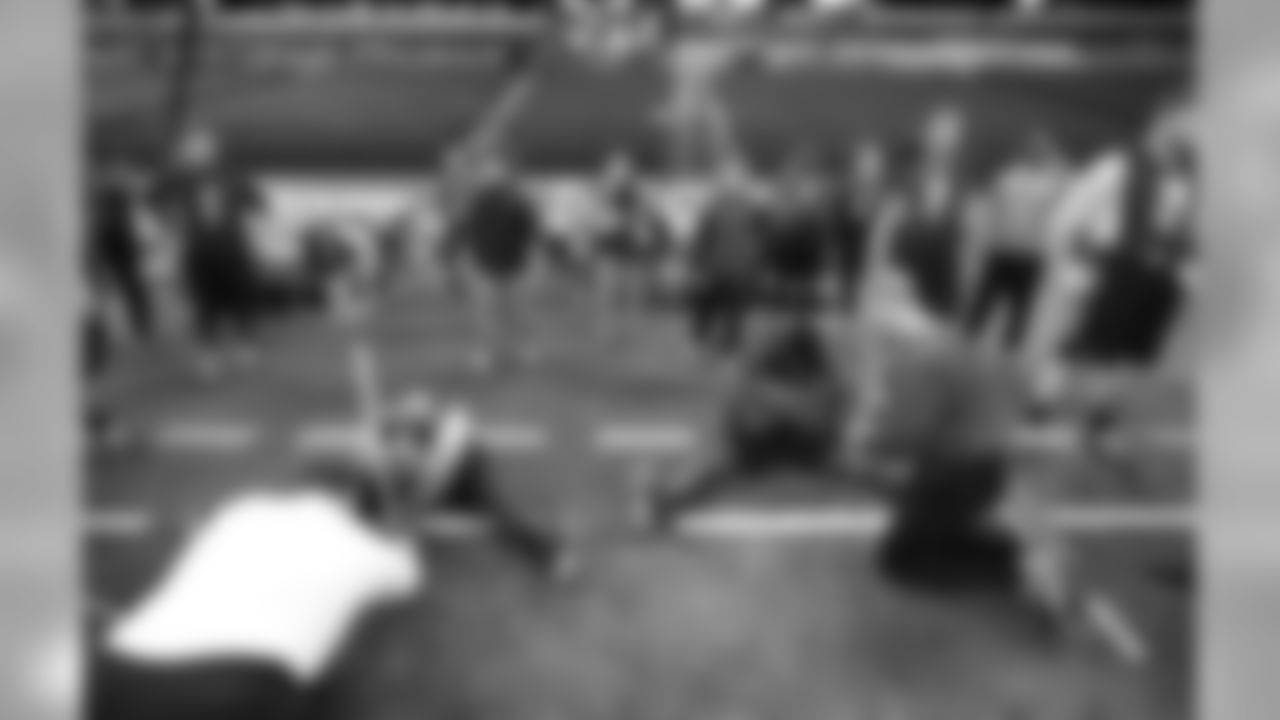INDIANAPOLIS -- For the past three decades, the Circle City has been the hub of the NFL universe at the end of each February. Indiana's conveniently, centrally located capital has hosted the league's annual Scouting Combine over that time.
Much about the event has changed during 30 years. It has become a media sensation, where once only a small number of reporters would attend, the NFL now credentials nearly four times as many media as there are players invited. At one time, there wasn't even a formal media access schedule. Reporters would just show up, hang around the city and their hotels and hope to stumble across influential NFL types to interview.
Every aspect of the Combine is televised, from the mundane (gab sessions between reporters and their subjects) to the meaningful (on-field testing of players). The week of workouts and evaluations has become so consequential to the fortunes of the players - a good performance can catapult a lesser-known commodity into a blue-chip prospect, while a bad effort can see a player's stock tumble - that the athletes spend inordinate amounts of time in their free time getting conditioned to take the specific tests that they undergo here.
It is those very tests, however, that have stayed relatively static over the decades, and that has caused some of the most influential NFL executives to question whether it's time to re-evaluate the evaluation process itself. Patriots head coach Bill Belichick, for instance, has occasionally lamented how irrelevant some of the Combine tests are to actual football-playing evaluation.
Jeff Foster, president of National Football Scouting Inc. (which oversees the Combine), recently announced that his organization is establishing a committee - comprised of league executives, scouts, coaches, athletic trainers, team physicians and others - to conduct a comprehensive review of the Combine and consider adapting the operation to conform to more modern standards and technology. That would presumably include not just the on-field evaluations, but also the intellectual and psychological testing (known as the Wonderlic) and in-person interviews between players and NFL teams at the Combine.
"Our first focus is to look at what we do currently and make sure that that's relevant," Foster told USA TODAY just before this year's Combine opened. "And if it is, great, we'll continue to do it, because historical comparison is really important to the evaluation process. But if we believe that there's something that's not relevant, then what can we replace it with that will help us evaluate the players?"
Some critics, like Belichick, see the so-called "underwear Olympics," as the Combine is derisively known because the players work out without pads, as a slate of largely antiquated or ineffective testing measures. What good, for example, does it do to make 300-plus-pound linemen run a 40-yard sprint? Or to make quarterbacks do high-jumps? Or kickers bench press 225 pounds as many times as they are able? None of these physical activities can help determine whether or not a guy can block, read a defensive coverage, or boot the ball accurately on a consistent basis.
"We've always talked about the 40-yard dash. The 40 has been in the game for a lot of years. Is it really necessary for an offensive lineman? Probably not," Kevin Colbert admitted. He's been Pittsburgh's general manager since 2000 and is one of the more highly-regarded front office executives and talent evaluators in the league.
Check out some photos from the third day of the 2016 NFL Scouting Combine at Lucas Oil Stadium in Indianapolis, Ind., on Friday, February 26, 2016.

Indiana offensive lineman Jason Spriggs prepares for the long jump drill at the NFL football scouting combine in Friday, Feb. 26, 2016, in Indianapolis. (AP Photo/Darron Cummings)

Arizona State offensive lineman Chris Westerman, left, and Kansas State offensive lineman Cody Whitehair run a drill at the NFL football scouting combine on Friday, Feb. 26, 2016, in Indianapolis. (AP Photo/Darron Cummings)

NFL scouts watch the 40-yard dash during the 2016 NFL Scouting Combine on Friday, Feb. 26, 2016 in Indianapolis. (Perry Knotts via AP)

Offensive linemen are measured during the 2016 NFL Scouting Combine on Friday, Feb. 26, 2016 in Indianapolis. (Perry Knotts via AP)

Alabama running back Derrick Henry participates in the vertical jump during the 2016 NFL Scouting Combine on Friday, Feb. 26, 2016 in Indianapolis. (Perry Knotts via AP)

A detail view of Nike shoes during the 2016 NFL Scouting Combine on Friday, Feb. 26, 2016 in Indianapolis. (Ben Liebenberg via AP)

Kansas State running back Glenn Gronkowski runs the 40-yard dash during the 2016 NFL Scouting Combine on Friday, Feb. 26, 2016 in Indianapolis. (Ben Liebenberg via AP)

Indiana offensive lineman Jason Spriggs performs the vertical jump test at the NFL football scouting combine in Friday, Feb. 26, 2016, in Indianapolis. (AP Photo/Darron Cummings)

Ohio State offensive lineman Taylor Decker runs a drill during the 2016 NFL Scouting Combine on Friday, Feb. 26, 2016 in Indianapolis. (Ben Liebenberg via AP)

The running backs group huddles during the 2016 NFL Scouting Combine on Friday, Feb. 26, 2016 in Indianapolis. (Ben Liebenberg via AP)
"Does an offensive linemen have to run 20 yards?" Colbert continued. "Well, he may have to get to a safety at 15 yards, so if he can run 20, he can run 15. Same thing, is a 10-yard dash important for him? Yeah, because he has to reach a linebacker at maybe 5-7 yards away. So, there's still value, but you have to look. Is he really ever going to have to run 40 yards? That might be something just off the top of my head that we need to examine, but we'll look at each drill in that manner and say, 'What's the real pertinence for the whole league, not just us?'"
Another change the committee could consider is making players do drills in helmets and shoulder pads, to help simulate in-game action without actually risking physical injury through high-speed contact. As things currently stand, players are run through their paces in tight-fitting workout gear - shirts and shorts - and without having to face off directly against opponents. This might be better for the evaluation process if some drills include offensive and defensive players on the field at the same time, to mimic game conditions.
Which isn't to suggest that none of the Combine tests matter.
"In some positions, they do," Cardinals head coach Bruce Arians pointed out. "For linemen, some movement skills help. They have to hit people to see. The bench press ... their haunches are where there strength is and whether they win at the line of scrimmage. I'd rather see them do 50 squats than 50 bench presses. I lost that bet a long time ago."
How quickly any changes are agreed upon and implemented remains to be seen. Foster did not offer a specific timetable for the new committee, and some in the NFL might be resistant to radical changes.
"I'm a big believer in the Combine on so many levels," said former Patriots personnel man and current Falcons GM Thomas Dimitroff. "There are many reasons that we have the Combine from a medical and from our interview standpoint. I know that people comment out there that it's... like basketball on grass and that [the players] are just in shorts. I'm a big believer in movement and we all know in this league, it's a matchup league. You have to be able to run. You have to be able to move. You have to be able to have fluidity in your movement. You have to be athletic.
"It doesn't matter what position you play. There has to be an element of athleticism. You get a chance to see athleticism out here and you're able to compare it to other receivers running around, other line backers dropping, setting and breaking on the ball. I think there is a definite benefit here."
Speedy and pressing matters
Day 3 of media access here in Indy is when the players who arrived first at the Combine - specialists and offensive players - begin taking their physical tests. In the bench press department, the top performer thus far has been guard Christian Westerman of Arizona State, who managed 34 reps of the 225-pound bar. That's impressive, but nowhere near the all-time Combine record of 49, set by defensive lineman Stephen Paea in 2011. Paea is currently with the Redskins.
Speed was also measured on Friday. In the 40-yard dash, Patriots tight end Rob Gronkowski's youngest brother, Glenn, a fullback at Kansas State, ran an unofficial time of 4.70 seconds in his first attempt, and a slightly slower 4.74 with his second effort.
Georgia RB Keith Marshall was easily the fleetest afoot Friday. His official 40-time was a blazing 4.31, a full tenth of second faster than his nearest competitor and just seven-hundredths of a second slower than the Combine record of 4.24, established by RB Chris Johnson in 2008.

Conferring with Moses
During NFL Network's continuing coverage of the Combine, Belichick was spotlighted at one point in the early afternoon Friday. The tight shot of Belichick showed him in the stands at Lucas Oil Stadium, watching the running backs taking part in the 40. Seated directly to Belichick's left was Moses Cabrera, the recently-promoted head strength and conditioning coach for New England. The two men were in an apparently deep discussion at the time.
Running back is a potential position of moderate need for the Patriots in this draft, particularly after the losses to injury of two of New England's top backs last year (Dion Lewis, LeGarrette Blount). So, it was interesting to see how Cabrera had Belichick's ear, and vice versa. They were shown again later, in the same close proximity and engaged again in serious discussion, when the offensive linemen were being put through their paces on the field.
Cap carry-over
Belichick's team will have a little more cash to spend this year on free agents. During Combine Week, the NFL released a list of all 32 teams and the amount of 2015 unused salary cap space that each club can carry over into 2016.
New England was under the 2015 cap by a precise amount of $1,347,882, which is what will be added to their cap figure for the coming season. By comparison, the Jaguars topped the list with more than $32 million in carryover cash, while the Seahawks fell at the other end of the spectrum with just under $12,000.
The 2016 salary cap is projected by some observers to be in the neighborhood of $154 million and should be announced formally by the NFL before the start of free agency on March 9. So, with the 2015 windfall, New England's total should be around $155 million, give or take a few hundred thousand dollars in either direction, if that projection is accurate. Whatever the official number winds up being, the Patriots can add $1.3 million more to it with this week's announcement.












































